A Guide to Section Drawing
What is Section Drawing?
Section drawing can be explained with a simple analogy: slicing a loaf of bread.
If you had an unsliced loaf of fruit and nut bread and wanted to know how fruity and nutty it was, you would slice the loaf across the middle (say) and look at the sliced face of one of the two halves.
In an exactly similar manner, if on a computer you had a drawing of a three-dimensional object, say of an AA battery or a shopping mall, and you wanted to know what the inside looked at a particular point along its length (as a simple example), a ‘section drawing’ would display details of the one of the faces created by the slicing.
Cutting Planes
To determine where exactly you want to slice a three-dimensional computer object, CAD (Computer-Aided-Design) programs require you to position a plane (ie a flat surface) through the object to show where you intend slicing the object.
The concept of cutting planes
Source: MokhdarPadeli
Be aware that a cutting plane does not have to be a single flat surface… it can also be a multi-segment assembly of several planes. This kind of cutting plane effectively combines multiple section drawings into one.
A multi-segment cutting plane
Source: Barbara McDowell
The Purpose of a Section Drawing
Section Drawing in Engineering
Engineering objects often have complex inner structures, such as the inside of a jet engine. Like any modern-day objects, they are manufactured based on drawings with comprehensive details.
It is frequently necessary for manufacturers to know what the inside of such objects looks like. For instance, they would need to know how the inner parts fit together for them to assemble the overall object. A section drawing provides that information.
Explanation of engineering section drawing
Source: San Diego State University
Section Drawing in Architecture
A building is a three-dimensional object. Architects describe buildings with drawings that include the thickness of floor slabs, roof slabs, inner walls, outer walls, doors, windows, stairs, etc.
Architects often check the correctness of their design by examining a section drawing of the building. More importantly, local planning departments always need a section drawing (or drawings) to decide whether to issue a building permit for the construction of the building.
Architectural section drawing
Source: The Magnum Group
What is a Wall Section?
Sometimes walls are not as simple as a barrier of bricks or concrete blocks. Walls of single-family homes often have an interior wooden framework filled with insulating material (batten); industrial buildings often have a metal framework with a waterproof barrier sandwiched between two insulation layers.
Wall Section Drawing Example
Source: ARCAT
The Difference Between Section and Elevation Drawings
A section drawing is a view taken after you ‘slice’ an object, then look at the surface created by the slicing.
An elevation drawing is a view taken from a point outside the objectwithout any slicing.
In both cases, the object should be standing on its base when the view is taken.
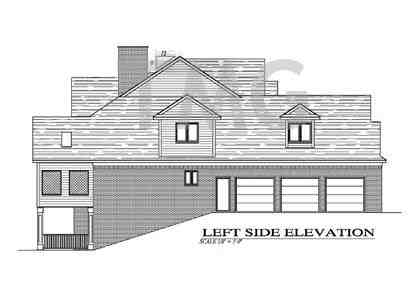
Elevation Drawing Example
Source: The Magnum Group
Difference Between Section and Detail Drawings
As mentioned above, A section drawing is a view taken after you ‘slice’ an object, then look at the surface created by the slicing.
A detail drawingmagnifies a specific part of a larger drawing. The specific part is often too small to be clearly seen in the larger drawing, hence the need for ‘spot magnification.’
A detail drawing is a view of a specific part of the complex drawing. It is often drawn on a separate sheet to provide space for the dimensions which could not be fitted into the complex drawing. Sometimes several detail drawings will fit onto the separate sheet.
The drawing below contains two detail drawings in circular outlines, magnifying parts of the larger drawing on the left.
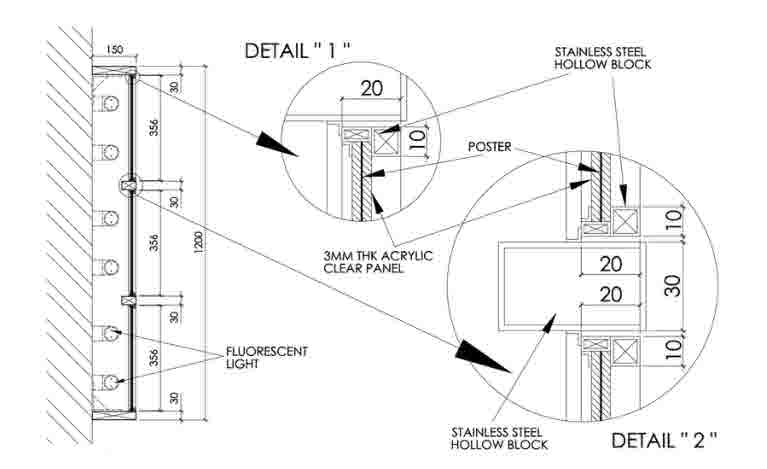
Many detail drawings contain section drawings as in the example above.
Types of Section Drawings
Full Section
A full section shows a slice across the entire object and is required when the object is not symmetrical.
A full section drawing
Source: MokhdarPadeli
Half Section
When an object is symmetrical, it is often superfluous to draw the full section, since one side of the section will be the mirror image of the other.
A half section drawing
Source: MokhdarPadeli
Longitudinal Section
A longitudinal section drawing is when the cutting plane is along the larger axis of the object.
Above is a photograph of St Matthew’s Church at Brixton, UK. A longitudinal section drawing of it is to its right.
Photo source: geograph.org.uk Drawing source: british-history.ac.uk
Lateral Section
A lateral section drawing is more correctly termed a transverse section drawing. This results when the cutting plane is along the smaller axis of the object.
Above is a photograph of St Matthew’s Church at Brixton, UK. A lateral section drawing is to its right.
Photo source: geograph.org.uk Drawing source: british-history.ac.uk
Offset Section
A section is said to be offset when the cutting plane consists of multiple segments (as mentioned above under ‘Cutting Planes’).
The concept of offset section drawing
Source: MokhdarPadeli
Broken-out Section
In this case the cutting plane is multi-segment and does not extend entirely across the item. Instead it turns perpendicular to the view midway.
The concept of a broken-out section drawing
Source: MokhdarPadeli
Revolved Section
Here the section drawing is rotated by 90 degrees from its actual position.
The concept of a revolved section drawing
Source: Beerza
Removed Section
A removed section drawing is when the section view is not positioned as projected from another view of the object. Removed sections are typically used when there are space constraints in the layout space.
Most often the removed section does not show details of what is behind the cutting plane.
The concept behind a removed section drawing
Source: makingthat.wordpress.com
How to Create a Section Drawing
The best way to create a section drawing of an object is to use CAD (computer-aided design) software. There are several such software platforms available with varying capabilities, and the more the capabilities the higher the prices, which range from $30 to more than $10,000 (!!).
1.
Decide where you want to slice (section) your object:
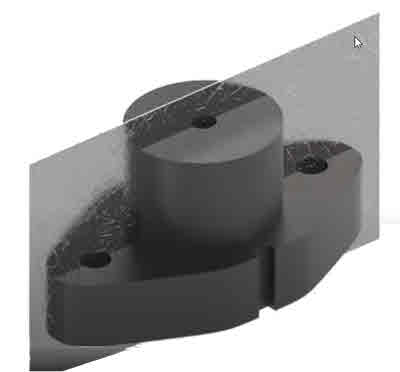 2.
2.
Using the cutting plane line tools of your CAD software, draw the cutting plane line (named AA in this case):
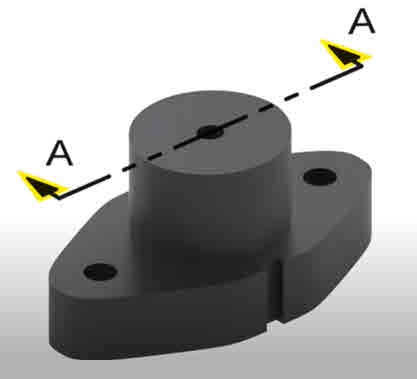
You can draw the cutting plane line in a plan view if you need to:
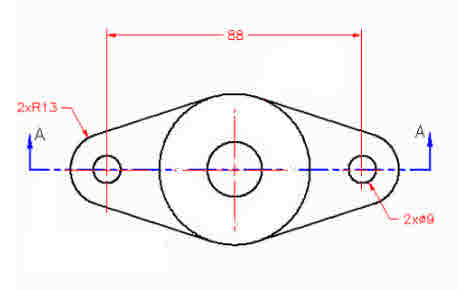 3.
3.
Click the ‘create section’ tool in your CAD software, and the object will be sectioned:
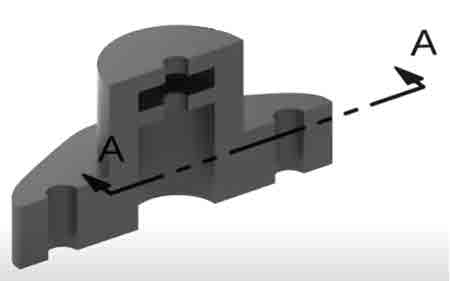 4.
4.
Convert the section to 2D view if you wish (using the tools in your CAD software).
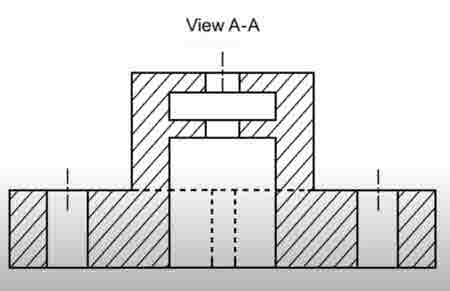
The diagonal lines in a section view are called ‘hatching.”
Should hidden lines be shown in a section view?
Hidden lines should not be shown in section views unless absolutely necessary, as in the example below:
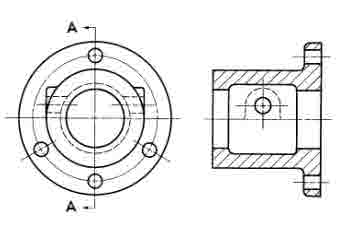
How to Draw a Section Perspective
Also called a “perspective section“, a section perspective is usually produced by architects to illustrate a lifelike sectional view of a project. It typically tapers towards the rear (hence the name ‘perspective’), just as it would in real life.
The perspective is usually colored andshaded in the proposed colors and may include furniture and people:
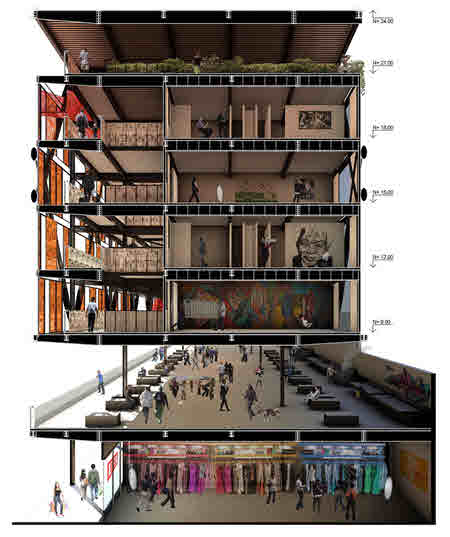
A Section Perspective Drawing Example
Source: Archdaily.com
The method is exactly similar to ‘How to create a Section Drawing’explained above, with the exception of the last step:
1.
Using CAD software, create the object in 3D
2.
Decide where you want to section the building
3.
Set up your cutting plane line in plan view
4.
Section the 3D building, add 3D people and furniture
5.
Realistically color and shade (‘render‘) the result using using your CAD software’s rendering tool.
How Do You Read a Section Drawing?
Section Line Naming
Since a single drawing may contain several section lines, there must be a way of referring to each section line uniquely.
A unique letter of the alphabet is placed at either end of a cutting plane line, and the cutting plane line is named after the two letters. For example, the cutting plane lines in the following diagram are named ‘AA’, ‘BB’ and ‘CC’:
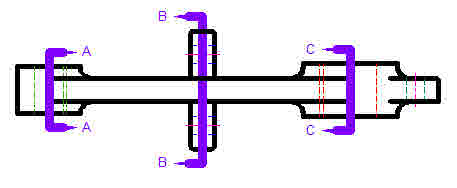
Source: SMHS Shop
In the case of drawing sets containing many section drawings, the section drawings are often grouped together on a sheet separate from the parent drawing. In that case, the cutting plane line lettering would also contain the name of the parent drawing sheet:
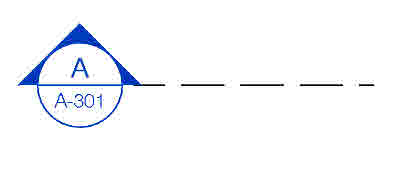
In the above diagram, the parent drawing of the section is sheet number A-301.
Understanding the Section View
The section line always ends in arrowheads. To understand how the section drawing is orientated in real space, imagine you are standing on the side of the parent object opposite the side the arrowheadspoint to.
This is best explained by the below diagram:

Source: msbears.com
Any questions about the above diagram or other concepts in this article? If so, please drop them in the comment box below or contact us from the contact form at upper right.
Need Professional CAD Drafting?
As you may have guessed, CAD services are our specialty. Learn more about them at https://themagnumgroup.net/ . It would be a pleasure to serve you.
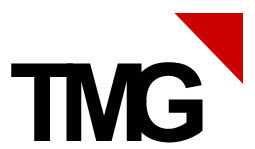
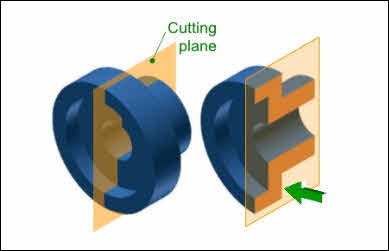
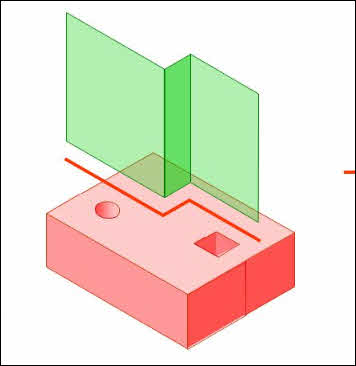
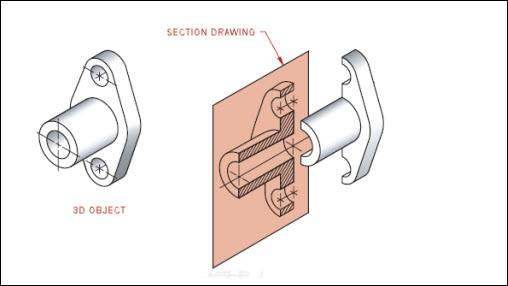
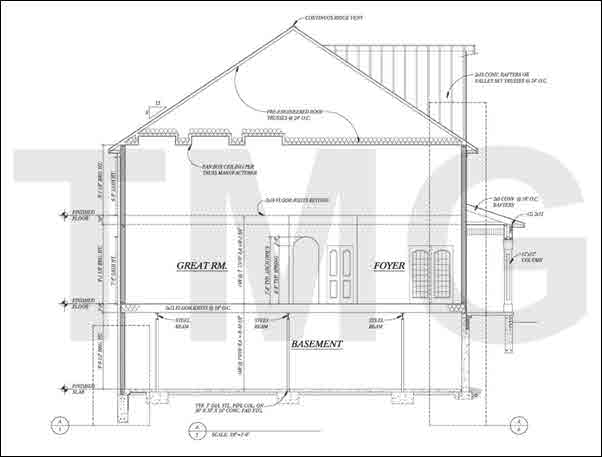
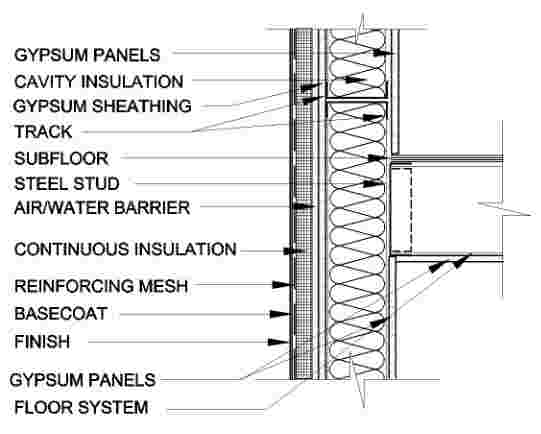
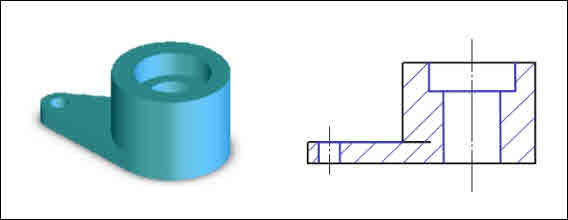
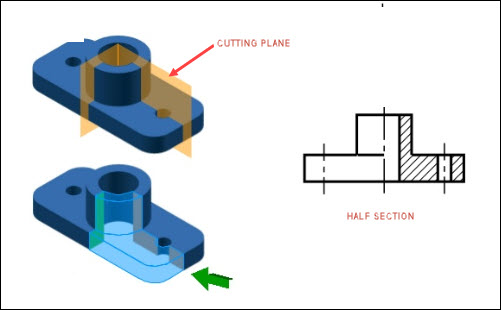
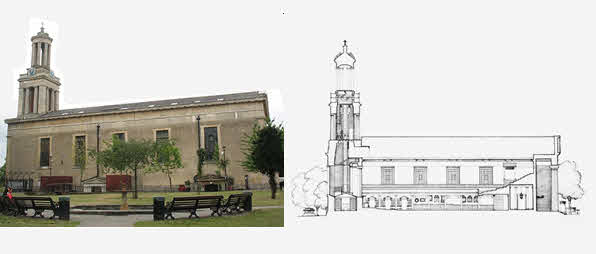
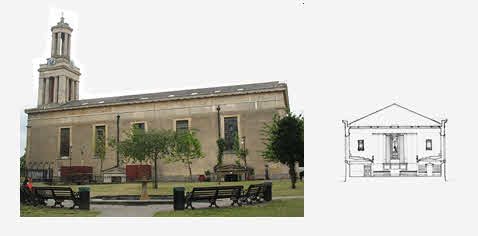
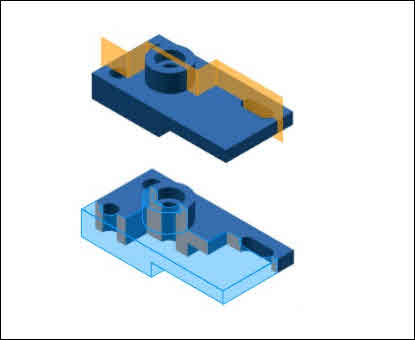
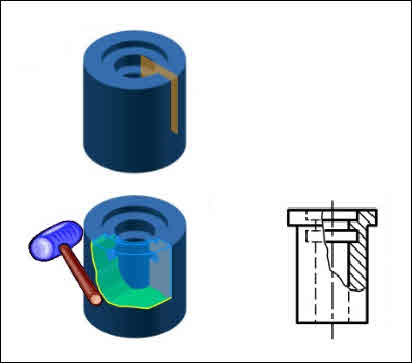
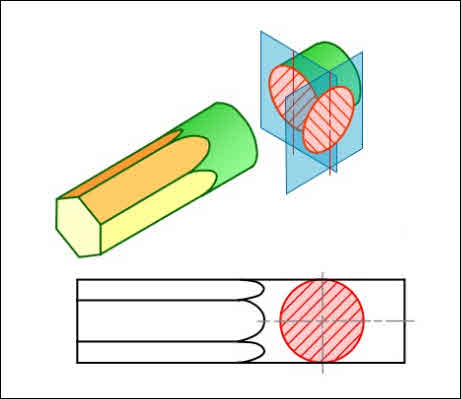
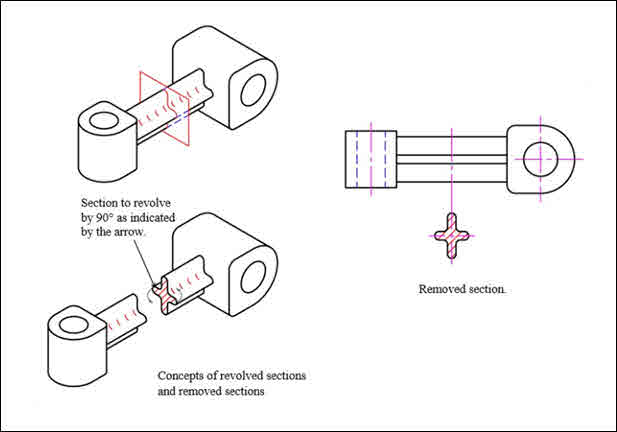





I loved it when you said that it is frequently necessary for manufacturers to know what the inside of such objects looks like. My brother plans to build a beautiful house. I will share this post for him to know where to find drafting services in town. Thank you for this post.
Thanks for the compliment, Jeff. We look forward to giving your brother exactly what he needs at a price he’ll love. Ask him to mention my name in the subject line of his message so that I can give him my personal attention.
Regards,
Lucky Balaraman
CEO, The Magnum Group